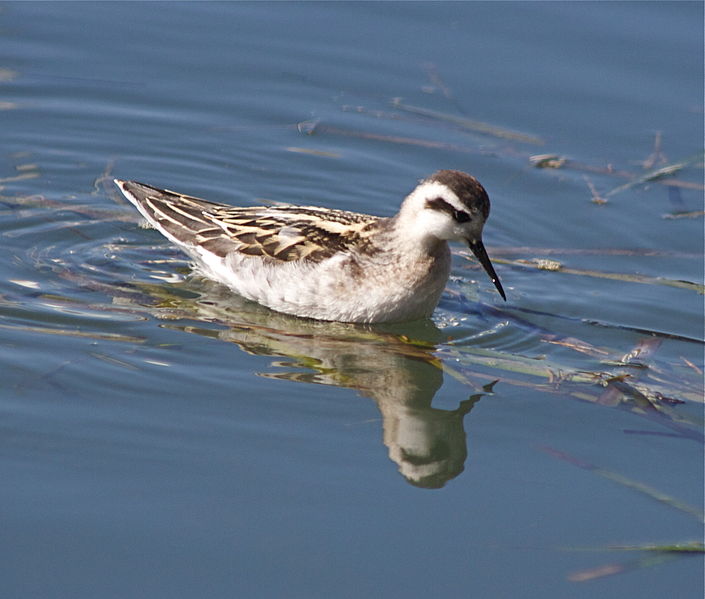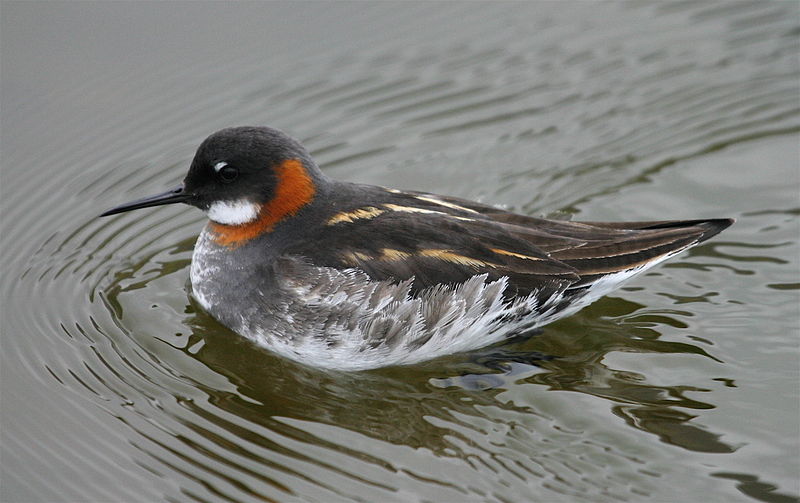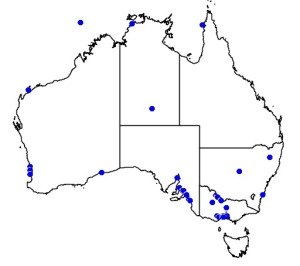Colours
Distinguishing features
They have lobed toes and a straight, fine bill. The breeding female is predominantly dark grey above, with a chestnut neck and upper breast, black face and white throat. The breeding male is a duller version of the female. They have lobed toes to assist with their swimming.
Young birds are grey and brown above, with buff underparts and a black patch through the eye. In winter, the plumage is essentially grey above and white below, but the black eyepatch is always present. (Wikipedia)
Size
- From 18 cm to 19 cm (Length of specimen)
Wingspan
- From 31 cm to 34 cm
Synonyms
Distribution
Behaviour
When feeding, a Phalarope will often swim in a small, rapid circle, forming a small whirlpool. This behavior is thought to aid feeding by raising food from the bottom of shallow water. The bird will reach into the center of the vortex with its bill, plucking small insects or crustaceans caught up therein. It has been shown that phalaropes use the surface tension of water to capture food particles and get them to move up along bill and into their mouths. (Wikipedia)
Web resources
References
- Simpson, K., N. Day and P. Trusler (2004). Field Guide to Birds of Australia: 7th Edition Penguin Group (Australia), Camberwell, Victoria.


